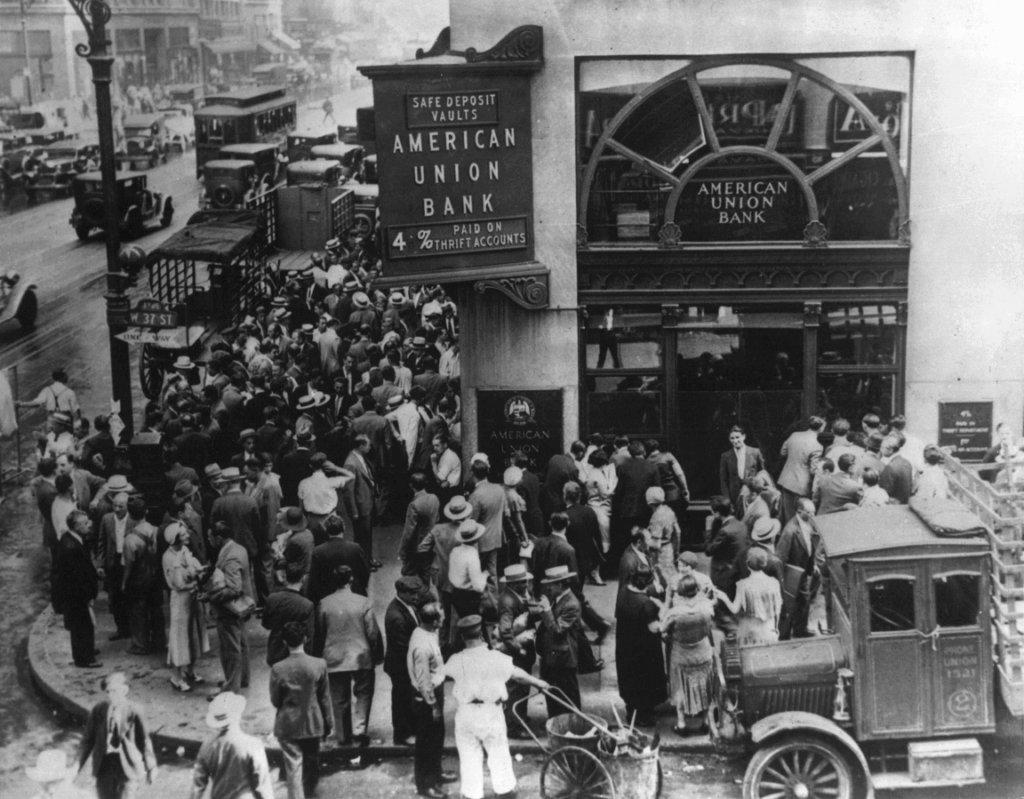A bank is a company that works with the money that the people give it. If you give your money to a bank, it not only protects it but pays you interest so that it can work with the money. This is one of the reasons why people save their money in a bank. Money may also be safer there than at home.
Banks also lend money to other businesses and customers. They collect extra money called banking fees with which they pay interest to savers as well as salaries for their workers. Banks make a profit because they collect more interest than they pay to savers.
Without banks the world’s economy would not be able to grow. Investors would not find the money they need for new projects. Industries could not buy new machines and modern technology.
Image : Debi Brady via Pixabay

Bank Services
Banks provide their customers with a number of services.
With a checking account you can pay your bills. A check is a slip of paper that tells the bank how much money it should withdraw from your account and pay to someone else. Today, more and more people use the internet, also a banking service, to pay their bills. Banks also give their customers plastic cards with which they can get money from their account everywhere and whenever they want. They can also use them to pay without cash at shops, gas stations and other stores. Checking accounts are a comfortable way for customers to handle their money.
For people who want to save money banks offer savings accounts. Usually, banks pay more interest for savings accounts than they do for checking accounts. They hope that the customers will leave their money in the bank for a long time, which is why the bank can work with this money and offer it as loans. Banks, however, cannot give all of their money as loans. In most countries the government limits the amount of money that banks can use as loans. They must always keep back a certain percentage in the form of cash.
People who need money for certain things like buying a house or a car need a lot of money quickly. The money they borrow from a bank is called a loan. In most cases they do not pay back all of the money at once but a small part of it, with interest, every month. If someone cannot pay back a loan the bank usually can take away valuable objects like cars or houses.
Modern banks offer their customers many other services as well. They tell them how they can make money with investments in stocks and bonds. Credit cards are given to customers as a cash-free way of buying things. Almost all banks have automatic teller machines (ATM) at which customers receive money from their account. Some banks even deal with insurance.

ATM in New Orleans
Infrogmation of New Orleans, CC BY-SA 4.0,
via Wikimedia Commons
Types of Banks
Commercial banks are the most important banks. They offer many services, different forms of accounts and also loans. While, at first, commercial banks only offered their services to businesses and companies, they are for everyone today.
Investment banks do not take or keep the money of individuals. They help organizations and large companies raise money on the international financial markets.
Central banks manage the banking system in a country. The Federal Reserve in the United States and Bank of England are two prominent banks that take over these tasks. The European Central Bank is responsible for the circulation of money in the Euro zone.
Online banks can often give their customers more interest because they do not have the expenses that physical banks do. They can be accessed over the internet and are becoming more and more popular.
Savings and loans are banks that specialize in financing houses. Although interest rates are higher, such banks offer up to 30-year mortgages. Customers pay back their loan through a monthly payment that they can afford.
Development banks are financial organizations that help Third World Countries. They not only provide money for nations in Africa, Asia and South America, but also send aid workers and offer technical help.
International Banking
The world’s largest banks are located in China, the United States, Japan and Europe. In most cases they operate in many countries of the world. Because banking is a global industry that does not stop at a country’s borders there must be worldwide agreements. International standards that banks must obey are written down in the Basel accords.

History of Banking
Banking has a long tradition. In Mesopotamia bankers kept gold and silver for people and lent it to others. Ancient Rome and Greece had similar banking systems to the ones we have today.
During the Middle Ages Italy was the centre of European banking. Jewish traders emerged as the first bankers and became very successful businessmen. Florence and Venice became known as two cities in which many people earned their money through banking. The Medici family dominated Florence for over two centuries and set up Europe’s largest bank in the 15 th century.
The first world wide banking crisis emerged during the Great Depression in 1929. Many citizens lost their jobs and their savings as banks crashed. In 1933 American president Franklin D. Roosevelt signed a bill in which the government guaranteed the savings of depositors if a bank went bankrupt.
In 2008 a banking crisis hit America and spread throughout the world. Banks gave homeowners mortgages without checking their financial backgrounds. House prices began to drop and banks lost a lot of money. Governments in many countries had to give them money and prevent them from becoming bankrupt.

Crowd at New York’s American Union Bank during the Great Depression
Image: Social Security History Site via Wikipedia, Public Domain